Croatia: A Rich Tapestry of Historical and Natural Heritage
In Split, on Croatia’s Dalmatian Coast, I met an elderly man who attested to having lived through most of the 20th century and, at one time or other, carried at least 12 different passports.
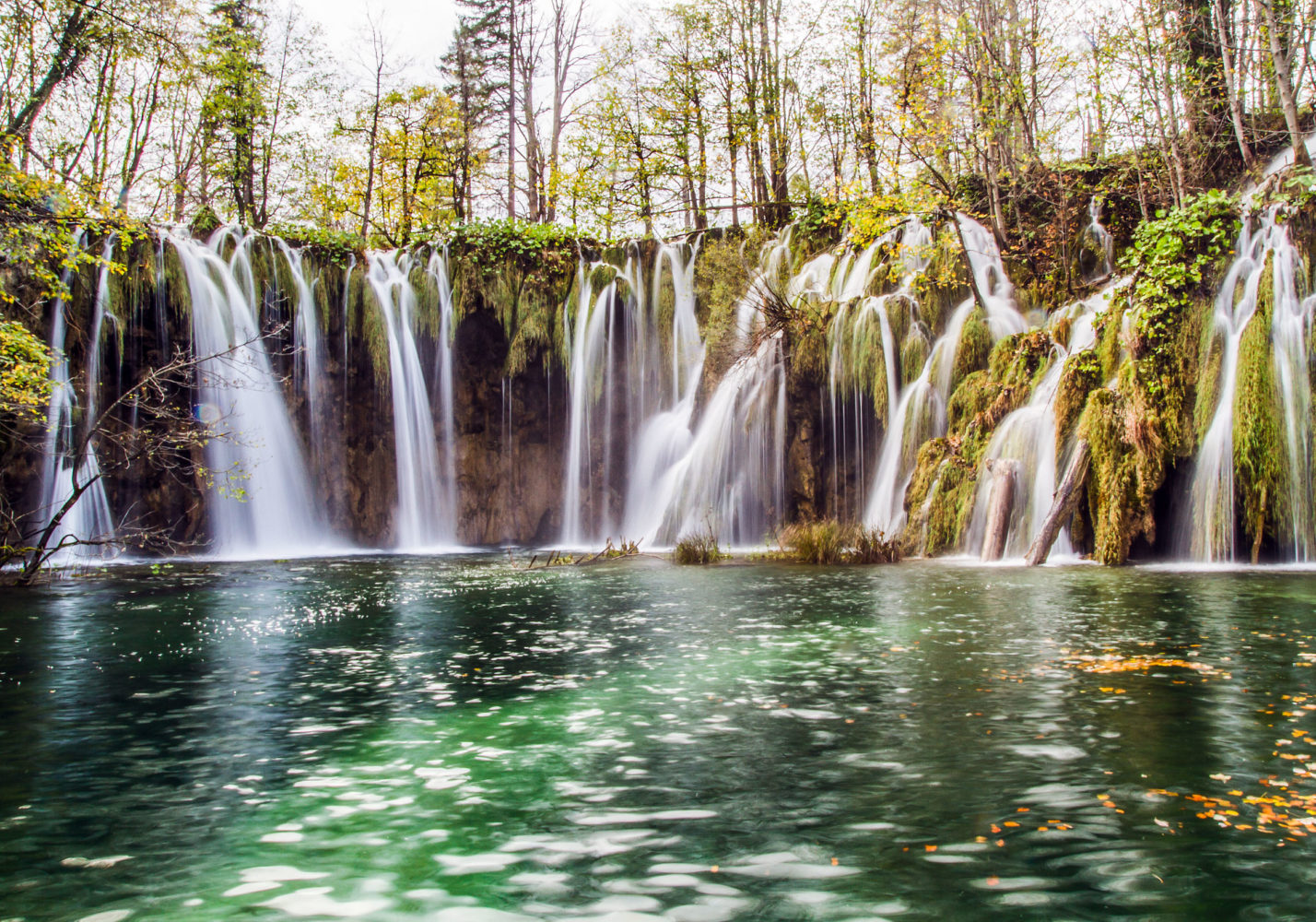
Talk to most people about Croatia and two recurring themes become immediately apparent: beautiful beaches and ‘the war’. Indeed, any trip to the former coastline of the eastern Aegean Sea is almost inevitably dominated by its spectacular sequence of beaches, coves, rocky headlands, quaint coastal villages, and islands, while the darker shadow of the war that ultimately broke the former Yugoslavia violently apart is less obvious — a pernicious undertone that more subtly colours the perceptions of visitors and locals alike.
So let’s get one thing out of the way: the Balkans has always been a hotbed of political intrigue, conflicts, interminable ethnic and religious rivalries, and a place of dark deeds done ‘dirt cheap’ — as immortalised by those scions of world politics, AC/DC. But for anyone visiting Croatia now, the cities, towns and countryside remain an enchanting blend of old and new.
In central Pula, the Triumphal Arch of the Sergii dates back to 29 B.C.: once a key portal in and out of the city, the square that now frames this Corinthian arch provides the platform for public performances and displays. The Temple of Augustus stands side by side with the Venetian Communal Palace, while 19th century apartment buildings clamour around the small square that encloses both. A 16th century castle, the Austro-Hungarian Arsenal built in 1856, together with numerous other buildings, sites and relics represent the complex melange of civilisations that have swept across the Balkans, now overlapping one another in the fabric of the city.

Outside the old city walls, next to the Via Flavia, the Amphitheatre of Pula is the sixth-largest of the Roman coliseums, and now almost certainly the most complete. It provided the venue for jousting tournaments during the Middle Ages and is now the home of the annual Pula Film Festival. As in its heyday, the amphitheatre continues to host gladiatorial battles as part of the Spectacvla Antiqva each summer, although I suspect that more wine and beer is spilt than blood.
Further south, on the Dalmatian coast, the city of Zadar also intermixes Venetian and Roman remnants with development from successive periods of Austrian, French, Austro-Hungarian and Italian occupation. Once part of Roman Illyria and for over 1000 years the capital of Dalmatia, Zadar is still largely dominated by the peninsula of the Old City, jutting out into the Adriatic. Still partly encircled by the walls of the old Venetian fortress that once occupied much of the peninsula, this part of the city is also fronted by the impressive, almost monumental, façade of the Zadar University — once the Institute of Saint Dimitri — facing out to sea.
At night-time, the close confines of the Old City, with its markets, food merchants, fishermen and trinket sellers, have a whiff of Medieval Europe, while the promenade, or riva, along the sea front provides a rather more serene, and wholly relaxing experience — or so I thought at first. It culminates in the Istarska Obala, a squared-off terminus to the seaside promenade that surrounds a large circle of seeming dark blue glass. It was only on closer inspection that I realised this circle comprised thousands of photovoltaic cells.
Watch: Mario Romulic and Drazen Stojcic capture the beautiful landscapes of Croatia.
However, the true magic only really began as the sun slowly set, providing a darkened backdrop to the Greeting To The Sun, created by architect Nikola Bašić. Slowly at first, individual lights would dart across the glass circle, then as twilight deepened into night proper, choreographed waves of light and colour began to dance across the glass surface — emulating the ebb and flow of the sea’s waves under a crowd of entranced spectators. I watched as this light ‘orchestra’ built to a spectacular crescendo, before slowly subsiding like the fall of the tide lapping near our feet.
More spectacular still, this light show was harmonised with the adjoining Sea Organ — a series of pipes and chambers under the riva that use the pressure from wave action to activate whistles and release sounds through steps at the edge of the sea. At times mournful, at times excited, even jarring and discordant, the Sea Organ was endlessly fascinating. As fellow visitors and locals alike sat swaying to the sights and sounds emerging underfoot, they seemed to resonate with the rhythms and moods of the sea in a quite spectacular convergence of public art with the heartbeat of the natural world.
This seemed like the perfect platform for a visit to the Kornati archipelago and its national park of some 130 islands scattered off the coast between Zadar and Sibenik. In stark contrast with Zadar and other coastal cities, the Kornati Islands reveal few obvious human artefacts other than a small number of secluded fishing cottages close inshore, and the occasional lighthouse — complete with keepers’ dwellings, and scattered remnants of occupation from the Romans onwards. Everywhere else, however, the islands were much more notable for their stark, almost bleak, beauty — volcanic headlands and sculpted rock pavement with sand or pebble beaches set against spectacularly azure seas.
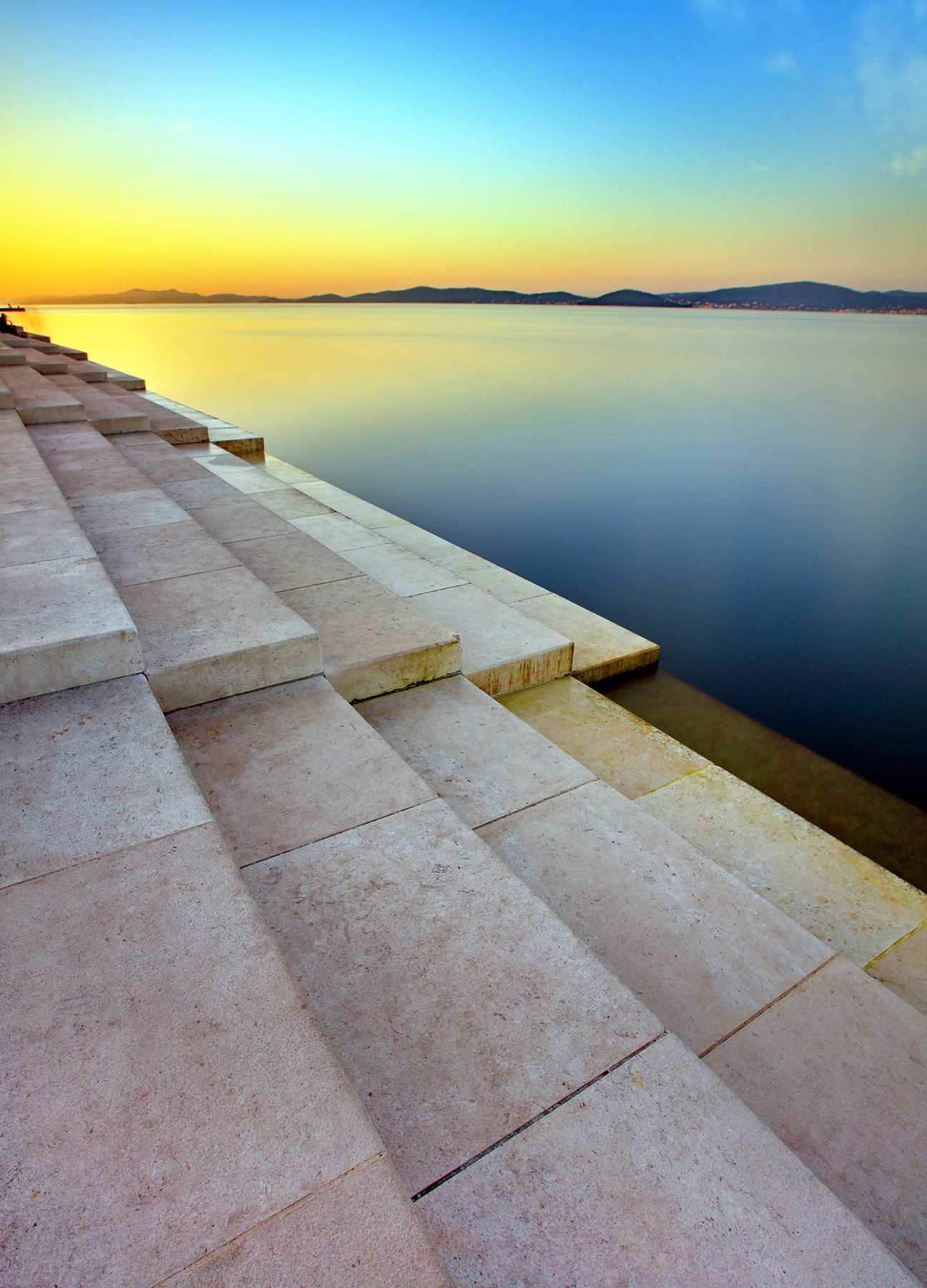
On the island of Kornat, I marvelled at the tilted crazy paving of rock formations clambering out of the Adriatic, while elsewhere, sheer cliffs would fall abruptly to dark, unfathomable depths. Looking back towards the mainland, a patina of softly crowned isles stretched out, interwoven with a complex base plate of deep blue to richly turquoise waters. The resulting jigsaw of landforms and twisted waterways drew George Bernard Shaw to comment, in 1929, that “On the last day of Creation, God desired to crown his work, and thus created the Kornati Islands out of tears, stars and breath.” Back on shore, with my feet back on firm ground and sights set well below the firmament, it was time to turn my attention to the port city of Split and the nearby islands of Hvar and Brac.
Split has undergone a significant cultural and physical reformation over recent years: its waterfront and port frontage is now a pastiche of modernity, with a sculptural colonnade of light standards and shade structures flanked by a formal grid of mature palms and planters. These hover over the riva’s glistening, white marble pavement and wrap around the small harbour area, while tiered ranks of three to five storey apartment buildings, cafes, restaurants and hotels provide a more traditional backdrop to the entire port. Even so, ‘traditional’ can be a relative term. My experience of a brief dinner and even briefer breakfast at my not-quite-waterfront hotel had reeked more of Soviet authoritarianism and austerity than the sort of lavishness associated with the area’s Roman, Venetian, Austrian and Italian antecedents.
Still, once free of my hotel’s strictures, I soon discovered that layers of real history awaited me behind Split’s uber-elegant frontispiece, from Jupiter’s Temple and the 13th century Cathedral of Saint Duje to the Neo-Renaissance, colonnaded formality of the Prokuruativa, or Republic Square. A brightly-coloured clown, complete with fishing nets splayed outwards from his hat and an accordion to serenade the passing tourists, marked my passage into the much narrower confines of the city near the Cidro Palace.

Wandering through the maze of narrow, time-worn alleys and walkways of Varo — the ancient fishermen’s quarter — I found myself enticed to wander aimlessly on, to the Golden, Silver, Bronze and Iron Gates of Diocletian’s Palace, then its cellars, then peristyle square, within. Retracing my steps back through the Iron Gate, I was immediately struck by the crush and hubbub of tourists and locals alike within the Pazar or Market Square, and my thoughts were already turning to slightly more relaxed climes.
Hvar is, quite simply, the quintessential Adriatic island. Its quaint fishing villages and beaches are hemmed in by rocky promontories and pine forests, while inland, vineyards combine with fields of olives and lavender to gently subdivide the countryside into a patchwork quilt of rural activities. My leisurely bicycle ride from the ferry terminal at Stari Grad to the small port town passed an exquisite line of villas and fishing boats at the edge of a stone-walled canal, before traversing a series of ridges and rocky headlands that fell dramatically to the seashore and hidden coves.
Shaded by a canopy of pines, our approach to Hvar simply revealed yet more of what I had come to expect — picturesque forts and crenulated walls perched above another playground for the rich and famous, or just fortunate. A marina, backed by cafes and restaurants, then apartments and villas, crowded around the waterfront promenade, while the young and beautiful — or not quite so — caught the last of the sun’s rays in various states of undress between intermittent dips in the outer harbour. Sipping a glass of chilled Felici Verdicchio, it was hard to imagine that a summer’s day could be much more atmospheric or appealing than the one that was drawing rapidly to a close.
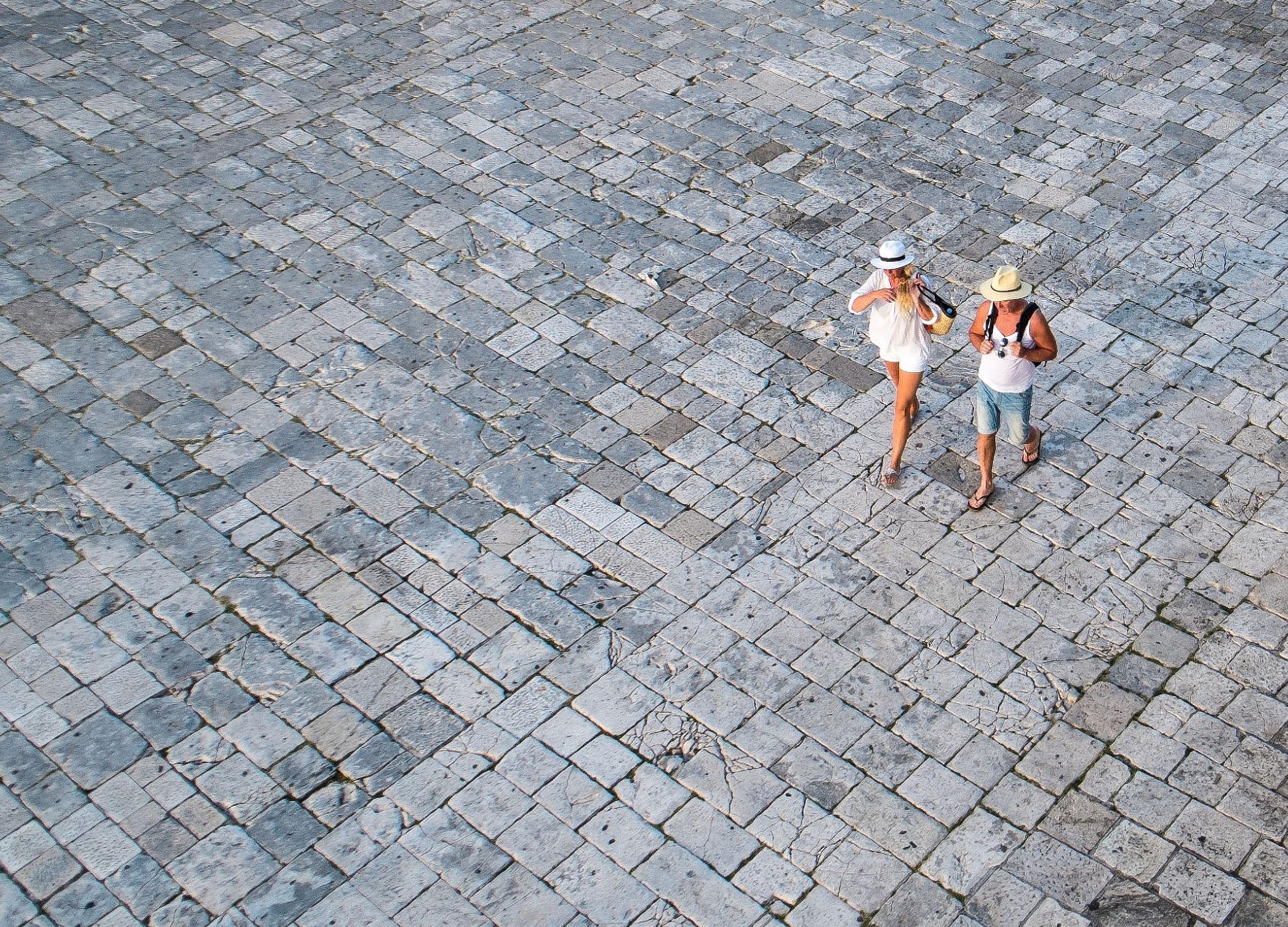
Neighbouring Brac Island offers a recipe very similar to that of Hvar, though set apart by the amazing distal spit of Zlatni Rat Beach, near the town of Bol. Approached through a large stand of pines, the spit suddenly emerged in front of me, then projected straight out — like a finger of golden pebbles — into the southern Adriatic. Surrounded by azure blue water on three sides, Zlatni Rat provides an unexpected and dramatic focal point for the southern coastline of Brac. The massed crowds of devotees scattered across both sides of the spit clearly attested to its popularity.
Venturing further south again, to the island of Mljet, was to bring a much bigger surprise: an island whose karst terrain has sunk at its western end to accommodate two salt water lakes — Veliko and Malo Jezero — within the main body of the island. Both are solidly enclosed by the forests of Mljet National Park and its gently undulating landforms. Legend has it that Odysseus was so enamoured of the quietude and serenity he found on Mljet that he stayed for seven years. My own quiet stroll around Veliko Jezero to the lake inlet at Soline convinced me that he might have been wise to stay a good deal longer.
Moreover, I couldn’t help but feel that the Benedictine Order had chosen well in locating the Monastery of Saint Mary on an islet within the larger lake, Veliko, during the 12th century. Now functioning as a restaurant, the monastery is still well worth a visit. I was gratified to learn from a fellow diner that Mljet had been overrun by vipers in the early 20th century, but mongooses had solved that problem after being introduced from India in 1910. Now, however, the mongooses were themselves an issue. Mulling this over as I readied myself for the walk back to Pomena, I decided that I had a slight preference for the present situation.
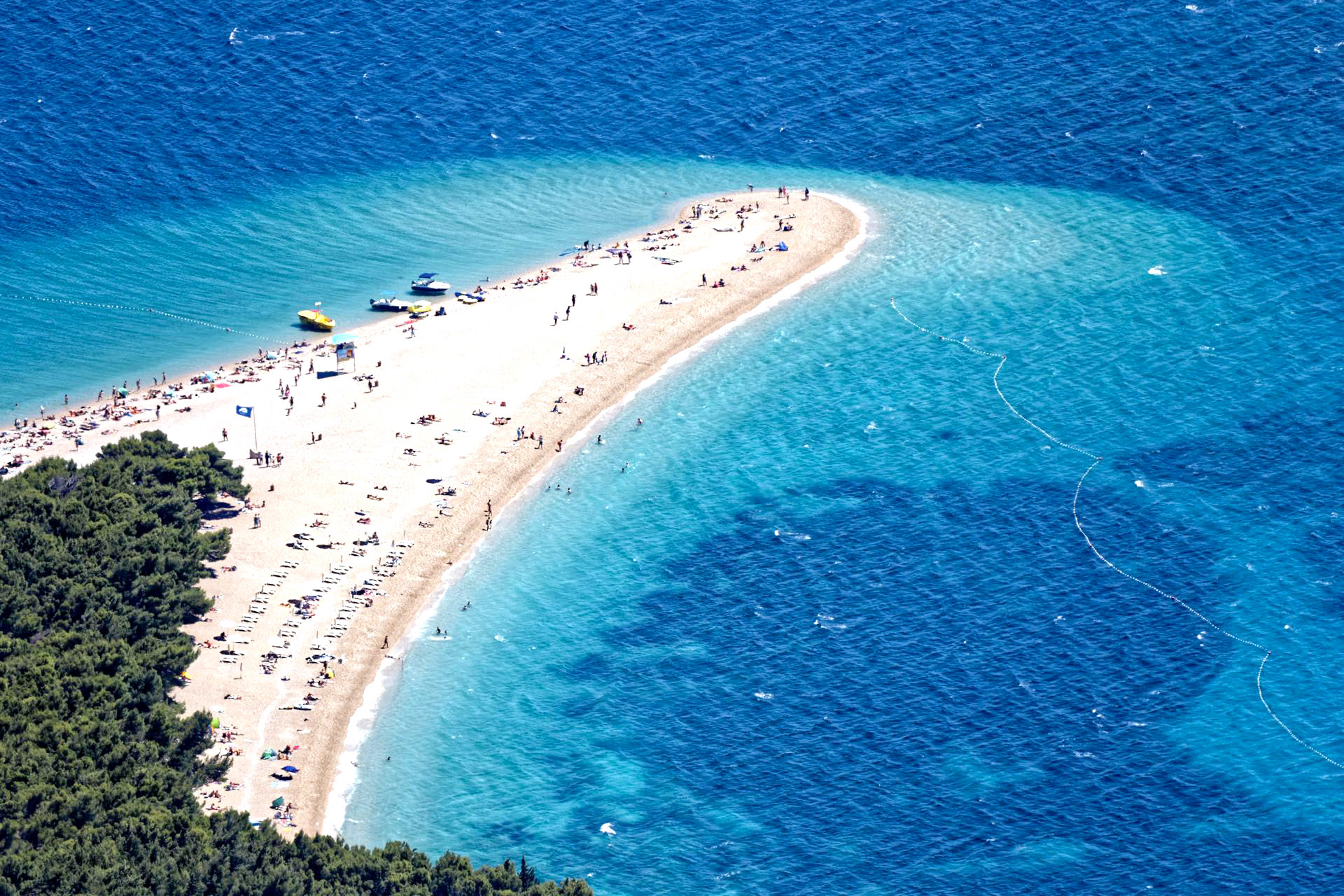
By now, Dubrovnik was looming large as both the supposed highlight of my sojourn in Croatia and as my point of departure from its shores. I was aware that the city had been renowned as the archetypal port city, but that it had suffered dreadfully in the war of independence. Supposedly repaired and recovered, I wasn’t really sure what to expect of Dubrovnik, although the initial sight of five cruise ships queued off its fortified walls warned of a type of assault that I hadn’t really contemplated.
In response, I decided to start early by circumnavigating the city’s walled ramparts — a wise decision, as the fortress’s narrow paths were already becoming increasingly crowded, with the cruise ship invasion gathering momentum. The Old Town’s massive stone walls, dating back to the 16th century, were surprisingly intact; they were also remarkable for the views that they offered of Dubrovnik’s dramatic interface with the Adriatic Sea and of its restored terracotta roofscape. The birds-eye view down to the pocket-handkerchief beach of Konoba Gallus and the intense jigsaw of apartments and pocket hotels wedged around it in the shadow of Fort Lovnienac was dramatic.
As I left the ramparts and stepped down into the heart of Dubrovnik’s Old Town, it was hard to reconcile the layers of Venetian, Gothic Renaissance and Baroque architecture that unfolded before me with the two lots that are kept as a reminder of the city’s state in 1995: barely any walls within either lot rose above waist level. Yet, the magnificent Sponza Palace and Rectors Palace Museum, the wonderfully Baroque Cathedral of the Assumption of the Virgin Mary, and the spectacular Church of Saint Ignatius — complete with pink marble columns and its own version of Rome’s Spanish Steps — were all seemingly ‘alive and well’ before me.
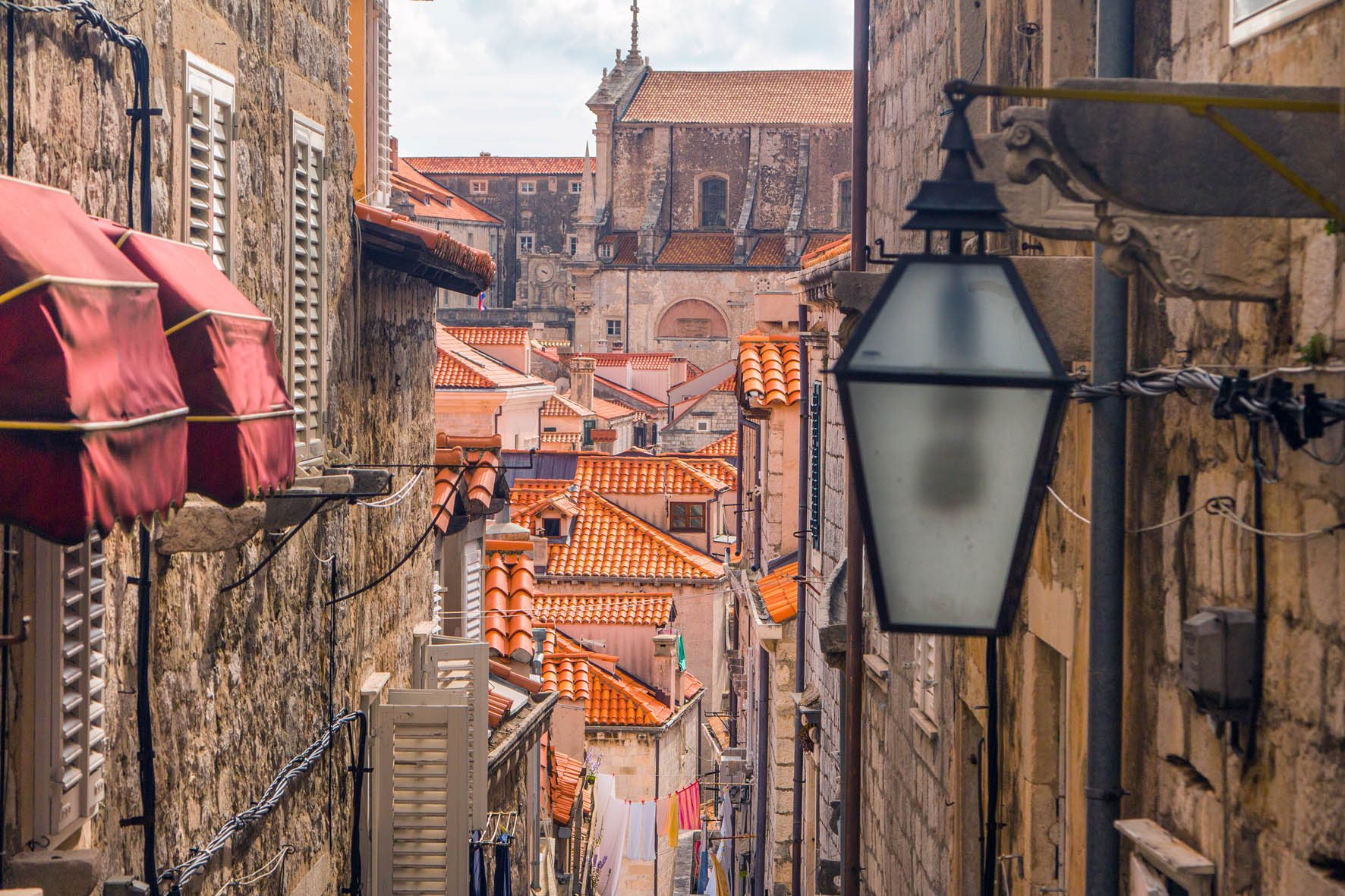
Unfortunately, so were thousands of other visitors, and I was rapidly tiring of playing human ‘dodgems’. Having recovered from luxuriating in the sensation of being transported back in time to the Middle Ages, I briefly retreated to a replica Irish pub for a medicinal Guinness, before beating a slow retreat back to the Pile Entrance. I returned to the Old City that evening, avoiding the daytime masses, and enjoyed a far more leisurely traipse through the Stradun Placa. But there really is something about first impressions, and I had the strong sense that it was time to move on.
As much as the islands off the main Croatian coast and the cities of Pula, Zadar, Split and Dubrovnik had captured my imagination, there was one place that I felt was imbued with a quite different and unique sense of specialness. Far removed from beautiful beaches and people, from Roman and Venetian architecture, from monasteries and old forts, the Plitvice Lakes represent a very different kind of experience.
Covering some 297 square kilometres and embracing 16 breath-taking lakes within the deciduous forests of central Croatia, the Plitvice Lakes National Park is the largest of Croatia’s national reserves. It was added to UNESCO’s register of World Heritage Sites in 1979 and comprises a necklace of waterways located in a valley between Mt Mala Kapela and Mt Pljesevica. The lakes’ colours range from dark grey and aquamarine to luminescent shades of turquoise, and they cascade downhill from Lake Proscansko Jezero — covering some 69 hectares — to Lake Novakovica Brod, just under half a hectare in area.
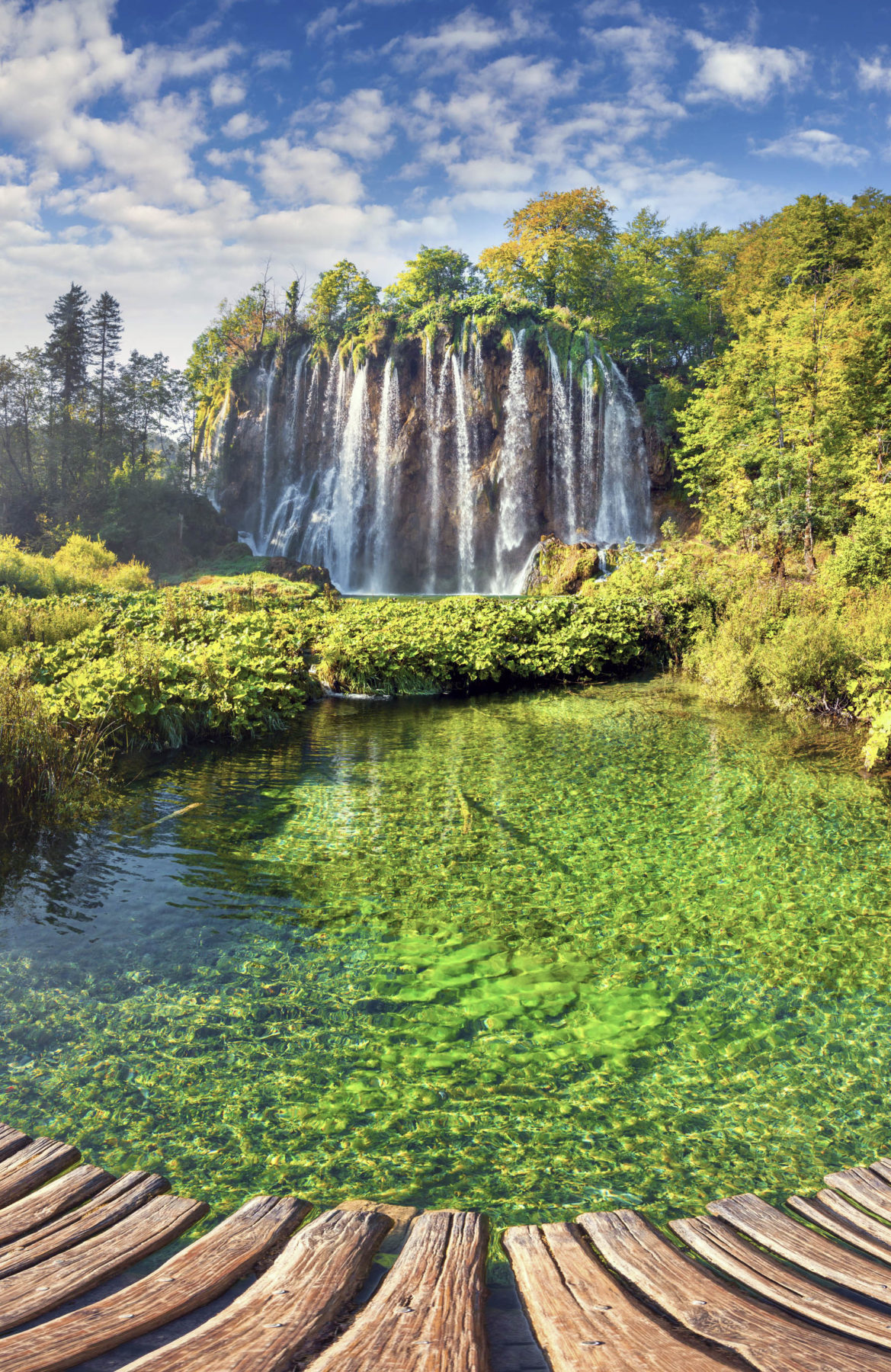
In between, a series of large cirque-like landforms enclose most of the lakes, with water cascading over and through a series of spectacular waterfalls. Paths wind through forest, as well as over and around the various lakes, waterfalls, rapids, ponds, wetlands, bogs and streams at the heart of the national park. The remarkable clarity of the water reveals fish, reeds, limestone pediment, and sunken logs and branches, sitting below the surface. These intermix with beams of sunlight bursting through the forest canopy, patches of fluorescent green algae and the lightness of the karst scarps at each waterfall to create a spectacular aquatic light show that draws thousands of visitors each day.
Fortunately, kilometres of well-maintained tracks — both past and between the lakes, but also high up through the surrounding forests — helped to space out the crowds while offering dramatic vistas of this natural wonderland. While others made use of the ferry and a small shuttle bus to cover the park’s considerable length, I found myself entranced by its many trails. Their sinuous routes and enclosure by tracts of forest — before ‘bursting out’ at the edge of lake, traversing a cascading stream full of fish, or suddenly being confronted by a waterfall stained bright green by algae — created a magical sense of anticipation and spectacle.
Like Hansel, I found myself following the ‘breadcrumbs’ of expectation around every corner and up every path. Truly, this was a very special experience, one that made a middle aged man feel as if he had reignited the deep-down inquisitiveness, joy and enchantment that adulthood seems to slowly steal from us all. One day at Plitvice was simply not enough, yet it still seemed to resonate with something deep in my primeval being that few other places have touched.
